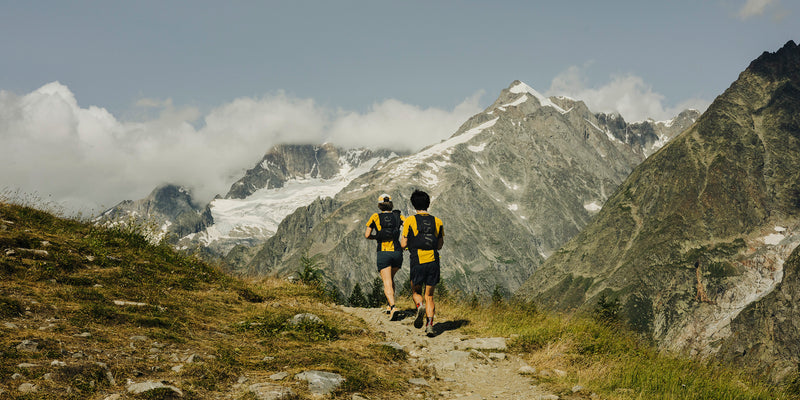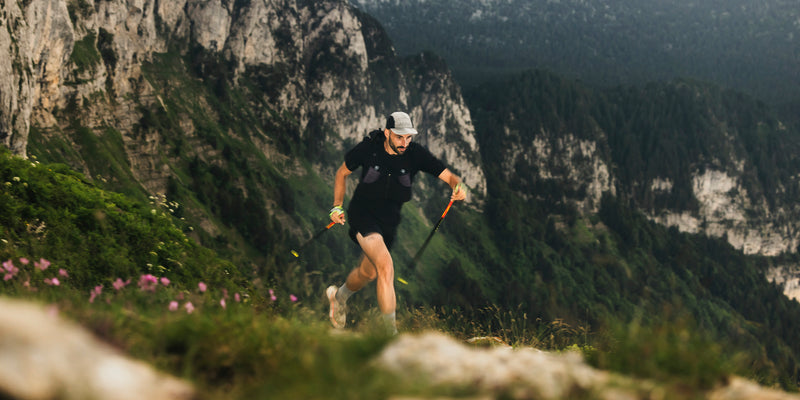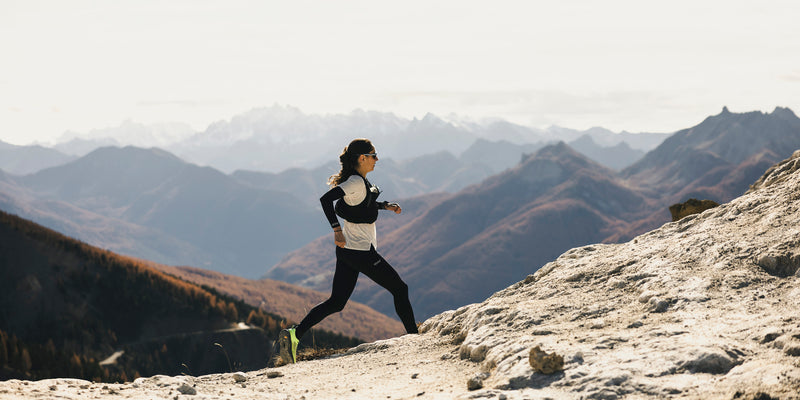Our first encounter with Yoga was in Nepal, when we had just completed a journey of 310 km and 20,000 D+.
Our bodies broken by the km, we stumbled upon a Yoga retreat on the heights of Pokhara and took the plunge. Without any particular attraction (even rather a lot of prejudices ^^) but guided by our curiosity and our thirst for discovery, we found ourselves embarked for 3 full days in a spiritual retreat, even though we had never practiced a session in our lives .
It was ultimately an incredible revelation which led us to practice with a certain assiduity and enthusiasm for 7 years now.
Because these few days were enough for us to clearly perceive the physical and mental benefits that practicing Asanas (postures) combined with meditation brought us.
In 3 days, and despite waking up very early and having late meditation sessions, we left with a level of physical and mental fitness that we had never felt in our entire lives.
So, we really wanted to share with you some routines which, if you practice them diligently, will bring incredible benefits to your trail running, but above all, will transform your daily life!
To begin with, here are some benefits of combining the practice of Yoga with that of trail running.
1**. Mental Focus:**
Meditation and mindfulness are key aspects of yoga. They strengthen mental focus, an essential skill for navigating complex trails, remaining attentive to body signals, and maintaining quick, accurate decision-making.
In short, yoga offers a perfect balance for the demanding practice of trail running. It prepares the body, improves mental resilience and promotes a positive mindset. Incorporating yoga into your trail training routine can improve your strength, flexibility and balance, providing a solid foundation for tackling the trails with confidence and resilience.
2**. Stress management / control of the flow of thoughts**
Yoga offers trail runners a valuable refuge to manage daily stress. By practicing deep breathing, meditation and mindfulness techniques, trail runners develop the ability to manage stress proactively. Yoga postures help you stay in the present moment and be present in your body. They promote physical relaxation, allowing trail runners to release the tensions accumulated during long hours of effort. This unique combination of tools helps trail runners maintain mental and emotional balance, stay focused on their goals, and approach each day with a calmer, more resilient attitude.
3. Conscious Breathing:
Breathing is the cornerstone of all physical activity, including trail running. Yoga teaches deep, conscious breathing techniques, which turn into a valuable skill for maintaining endurance during strenuous climbs, regulating heart rate on descents or remaining calm in busy situations.
4**. Improved Flexibility and Mobility:**
One of the keys to success in trail running is the ability to adapt to varied, often irregular and rugged terrain. Yoga, with its stretching and strengthening postures, promotes flexibility and mobility, which allows the trail runner to better negotiate steep descents and adapt to changing terrain conditions.
5**. Whole Body Strengthening:**
Trail running uses many muscle groups, from the legs to the trunk to the arms. Yoga offers complete muscle strengthening by specifically targeting the muscles used during trail running. Poses like plank, warrior, and side plank strengthen the core, thighs, and stabilizer muscles, improving the stability and power needed to tackle varied terrain.
So, whether you're a beginner trail runner or a seasoned enthusiast, consider yoga a valuable ally in your quest to find your inner strength. This delicate harmony between yoga and trail running will allow you to live an experience that transcends physical and mental boundaries, opening the way to a life in movement, balanced and full of elegance. Take the time to discover this harmonious alliance and make yoga and trail running a powerful synergy in your outdoor adventure journey.
Now that you have learned about the relationship between yoga and trail running, here are 6 postures that will help you begin this holistic practice.
Put on your FKT Pant or your Second Souffle Leggings, roll out the mat, light some incense and get started!

1. Salutation to the Sun (Surya Namaskar):
The Sun Salutation is a dynamic sequence of stretching and strengthening that engages the entire body. It prepares the muscles and joints for exercise while promoting a deep connection with breathing, essential for regulating energy throughout the race. Here's how to make it:
- Start in a standing position with your feet together.
- Stretch your arms toward the sky while inhaling.
- Lean forward as you exhale, hands toward the floor.
- Slide your right foot back while inhaling, knee on the floor.
- Return the left foot to plank position, then into downward facing dog.
- Switch to a reverse plank, then bring the left foot back between the hands.
- Stand up by stretching your arms toward the sky, then return to a standing position.
2. Warrior I (Virabhadrasana I):
Warrior I is a posture that strengthens the legs, thighs and core muscles, improving the stability and power needed to tackle varied terrain. This posture also opens the hips which tend to close after long hours of effort:
- From a standing position, take a big step back with your right leg.
- Turn your right foot 45 degrees, bend your left knee.
- The left knee should be in line with the ankle, with the arms extended upwards.
3. Hip Stretch (Pigeon Pose):
Stretching the hips and glutes is ideal for releasing tension in this area, promoting the flexibility needed to negotiate steep descents and uneven terrain. Here's how to make it:
- Sit with your right leg extended behind you.
- Bend your left leg, bringing your foot toward the inside of your right thigh.
- Slide your right leg behind you, stretch forward.
4. Tree Balance (Vrksasana):
Tree Balance improves balance and concentration, essential qualities for accurately navigating technical trails. Here's how to make it:
- Place the right foot on the left inner thigh, above or below the knee.
- Extend your arms toward the sky, palms together.
- Fixate on a point in front of you to maintain balance.
5. Plank Pose with Knee to Chest:
Plank Pose with Knee to Chest strengthens the core and stabilizing muscles, simulating the uphill movement common on trails. Here's how to make it:
- Start in plank position.
- Bring your right knee toward your chest, contracting your abs.
- Return to plank position and alternate legs.
6. Final Relaxation (Savasana):
Finally, Savasana is essential to merge the benefits of the session into deep relaxation. It promotes recovery, soothes the nervous system and prepares the mind for the effort to come. Here's how to make it:
- Lie on your back, arms at your sides.
- Close your eyes and focus on breathing.
- Stay in this position for at least 5 minutes.
By incorporating these yoga exercises into your trail training routine, you can improve your strength, flexibility, balance, breathing, stress management and mental focus. A regular practitioner will be able to better gauge their state of form and adapt their practice accordingly.
Open the doors to greater self-awareness and live in the moment! Wouldn't that be the key to happiness?


















